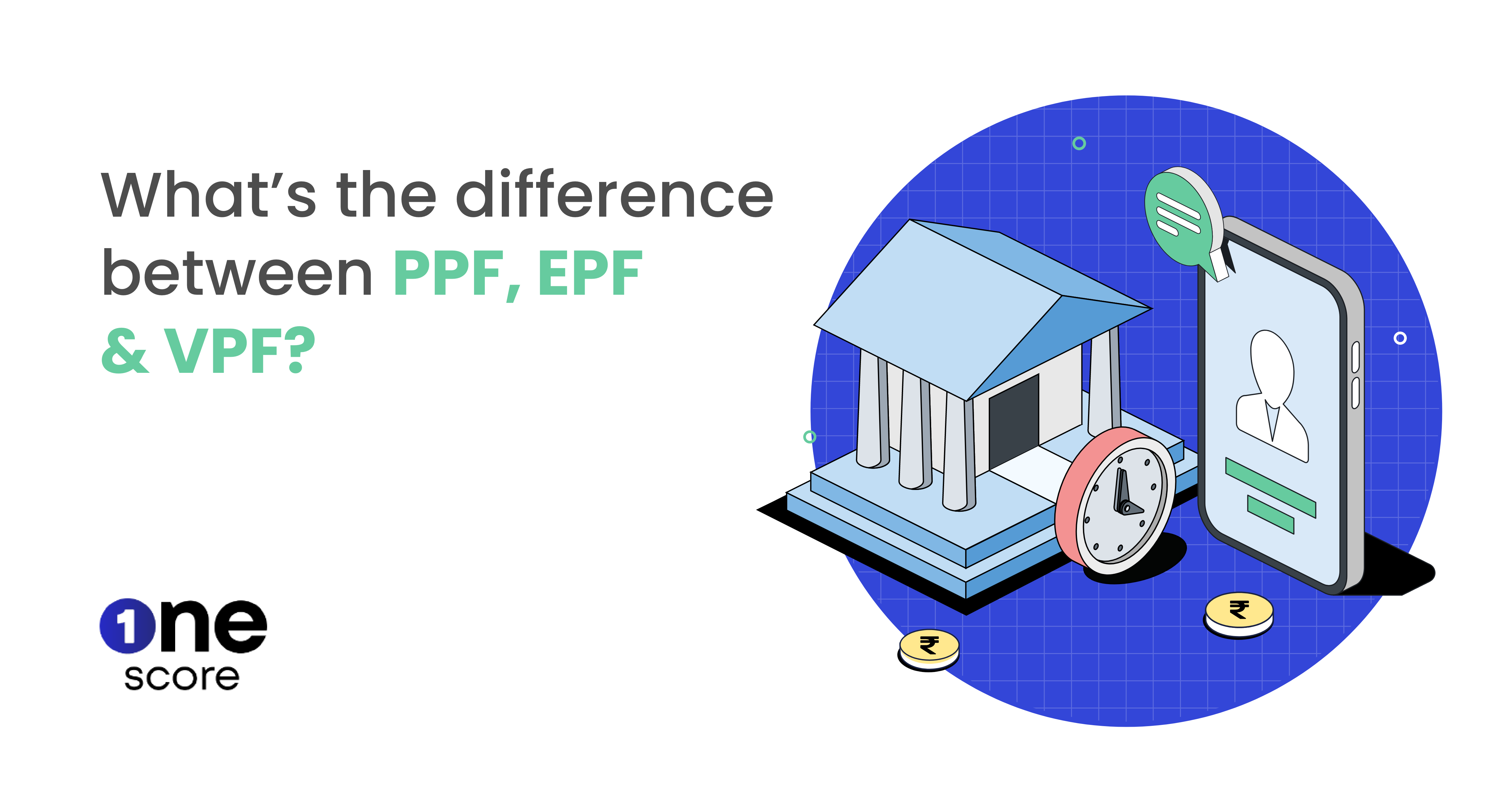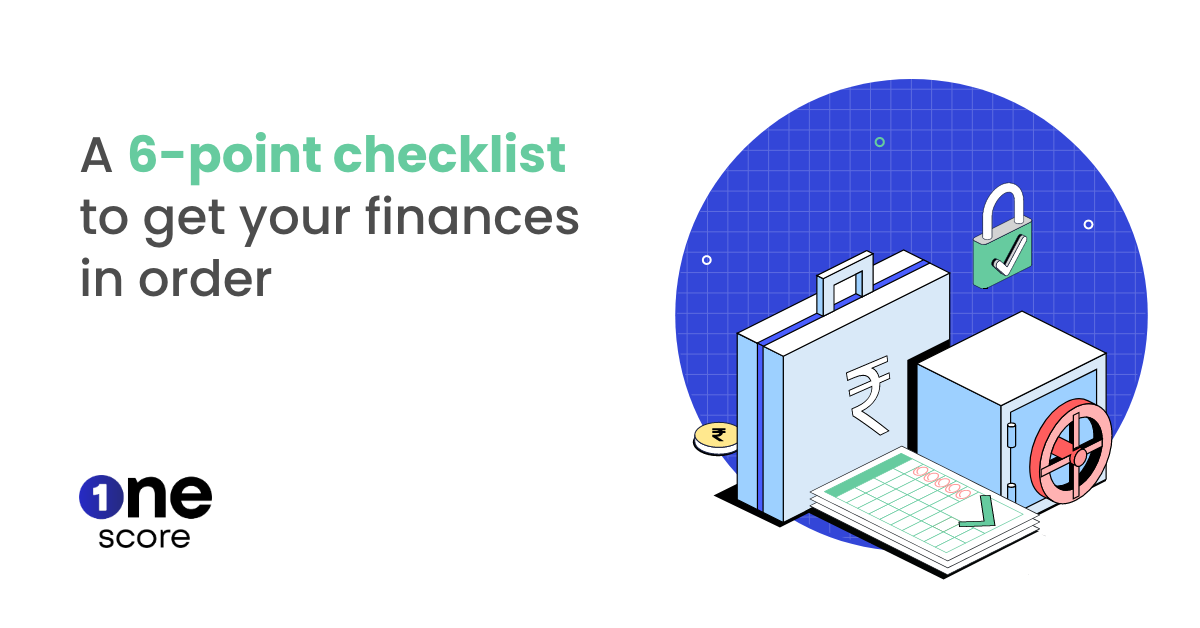What’s the difference between PPF, EPF & VPF?
Looking to invest in government-backed saving schemes with guaranteed returns? Here’s everything you need to know about EPF, PPF & VPF.

Listen to the article here:
PPF, EPF & VPF are three of the major government-backed long-term savings schemes. They are generally preferred by salaried individuals for their combination of tax savings, returns, and safety, but are suitable for anyone looking to invest for the long term. If you are looking for one, read on to understand the difference and make an informed choice.Table of contents:
-
What is PPF?
-
Withdrawal or loan against PPF
-
Interest & Benefits of PPF
-
What is EPF?
-
Withdrawal or loan against EPF
-
Interest & Benefits of EPF
-
How to transfer EPF when you are switching jobs
-
What is VPF?
-
Withdrawal or loan against VPF
-
Interest & Benefits of VPF
1. PPF (Public Provident Fund):
PPF was introduced to encourage small savings by providing tax benefits along with reasonable returns on investment. It has a lock-in period of 15 years and gives returns at 7.1% which is fully exempt from tax under Section 80C. The minimum amount to be deposited in a financial year is Rs.500 and the maximum can be Rs.1,50,000.
You can easily open a PPF account is your nearest bank or post office. You can also transfer the account to any other bank or post office branch of your choice anytime.
Now as PPF has a long tenure of 15 years, you may wonder if you could withdraw the amount earlier or avail of a loan against it.
Withdrawal from PPF:
Partial withdrawals are allowed after 5 years of maintaining the deposit. You can withdraw 50% of the balance excluding the first financial year.
Loan against PPF:
You can avail of a loan against your PPF account from the third to the fifth year of account opening. The maximum loan amount that you could get will be 25% of the total amount available in your PPF account, and the maximum tenure you can avail of is three years.
Eligibility for PPF:
-
You have to be an Indian citizen to be eligible for PPF
-
Required documents:
• ID proof (Aadhaar card, PAN card, passport)
• Address proof
• Signature proof
Interest on PPF:
The current interest rate offered on PPF is 7.1% p.a.
Note: PPF & other small-saving schemes’ interest rates are revised quarterly. That is why they are called assured returns, and not fixed returns.
Benefits of PPF:
As PPF is a government-backed scheme, the risk factor is minimal
Both interest on PPF and maturity amount is tax-free under Section 80c
Great diversification tool for long-term investors
Loan & withdrawals allowed
2. EPF (Employee Provident Scheme)
EPF is a retirement benefit scheme in which both the employer and the employee contribute on monthly basis. Both employer and employees’ contributions up to 12% (basic salary plus dearness allowance) are directed towards EPF. EPF offers the highest interest rate of 8.10% in comparison to other small savings schemes.
Withdrawal from EPF:
EPF can be partially or completely withdrawn. Complete withdrawal is allowed when the individual retires.
1.Partial withdrawals (50%) after 7 years of deposit, under special circumstances like medical emergencies, marriage, education of self or family member, child, etc are allowed.
2.If an employee remains unemployed for 2 months, they can withdraw it fully.
3.In case of death, the beneficiaries can be entitled to withdraw the accumulated fund.
Can you avail a loan against EPF?
Yes, EPF can be used as a personal loan during emergency, but it’s not exactly a loan. It’s an advance as you don’t have to pay back the amount withdrawn. Also, EPFO first verifies the reason and only upon approval you can withdraw the amount.
Eligibility for EPF:
Any organization with 20 or more employees is liable to provide EPF benefits. Employees become eligible for EPF simply by joining the organization. The scheme requires both the employer and the employee to contribute equal proportion of the salary and dearness allowance towards (generally 12%) their EPF investment account.
Interest on EPF:
The current interest rate on EPF is 8.10%.
Benefits of EPF:
Both investment amount and interest income is exempt from tax Helps create financial security after retirement Withdrawals allowed during emergencies
How to transfer EPF?
If you are switching jobs, you can do so using your Universal account number (UAN). Here’s the step-by-step process:
1.Log in on EPF member portal. If you haven’t registered yourself on the portal yet, sign up using your UAN. Go to Online Transfer Claim Portal & request for EPF transfer.
2.Submit Form 13
3.Click on ‘Request for Transfer of Funds’ and fill the required details.
4.You will get a PIN on your registered mobile number.
5.To authenticate it, connect with your previous or current employer.
In case of job loss, a person can withdraw 75% of the accumulated fund after one month of unemployment. You can also withdraw the remaining 25% of the fund after two months of unemployment.
3. VPF (Voluntary Provident Fund)
VPF is a voluntary fund contribution from the employee towards his provident fund account. This is over and above the EPF of 12% and is not a mandatory contribution. It is usually preferred by people in the higher tax bracket as an additional tax-saving instrument. You can contribute 100% of your basic salary towards VPF. It has a lock-in period of 5 years. Taxpayers can avail of deductions up to Rs 1,50,000 a year by investing in VPF.
Withdrawal from VPF:
VPF is maintained through an EPF account, so you can withdraw it upon retirement. You can also withdraw it if you have been unemployed for more than two months or even use it under special circumstances such as medical emergencies, marriage, child education, etc. If you withdraw it before 5 years, you will lose out on the tax exemption.
Benefits of VPF:
1.Safe & secure investment
2.Tax deductions up to 1,50,000
3.Non-taxable interest and maturity fund
4.High returns compared to regular saving accounts
Eligibility for VPF:
VPF is a voluntary extension of EPF and is only available for salaried employees in India.
Did it answer all your questions about PPF, EPF & VPF? Watch the space as we dive deeper into personal finance and stay on top of your credit journey with OneScore. Download now.
**Disclaimer: The information provided on this webpage does not, and is not intended to, constitute any kind of advice; instead, all the information available here is for general informational purposes only. FPL Consumer Services Private Limited and the author shall not be responsible for any direct/indirect/damages/loss incurred by the reader in making any decision based on the contents and information. Please consult your advisor before making any decision.

- OneScore , January 10, 2023

